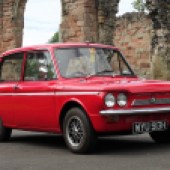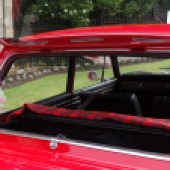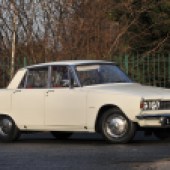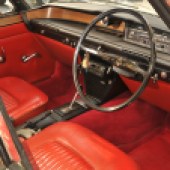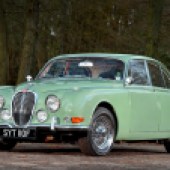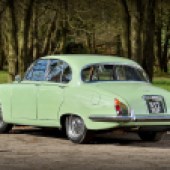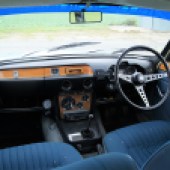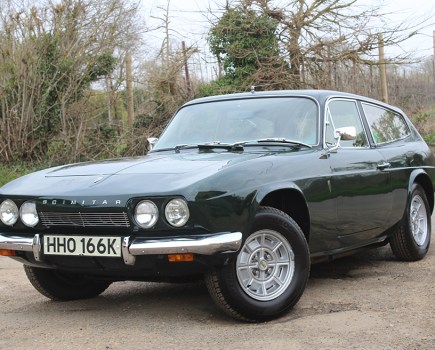Each of these classics is celebrating its 60th birthday this year so we thought we’d celebrate. Here are our favorite classic cars of 1963
The cars assembled below were showroom-fresh at an important time in history. New owners could have learned over their car radio of the The Great Train Robbery, Martin Luther King’s ‘I Have a Dream’ speech or the assassination of John F. Kennedy – or even listened to tracks from The Beatles’ debut album, Please Please Me.
Owners may have been less aware of their cars’ future classic status at the time, however; each was a modern, state-of-the-art offering built at a time when manufacturers were exploring the possibilities of new technologies, refining (or indeed abandoning) older designs, and responding to changing market attitudes towards fuel efficiency and performance. It would have been hard for many to imagine the enthusiastic following their chosen model would still have some six decades later.
As an automotive aside, 1963 also marked the inception of Automobili Lamborghini – the plucky upstart rival to all-conquering Ferrari. Sadly, its first car (the Lamborghini 350 GT) didn’t arrive on sale until May 1964.
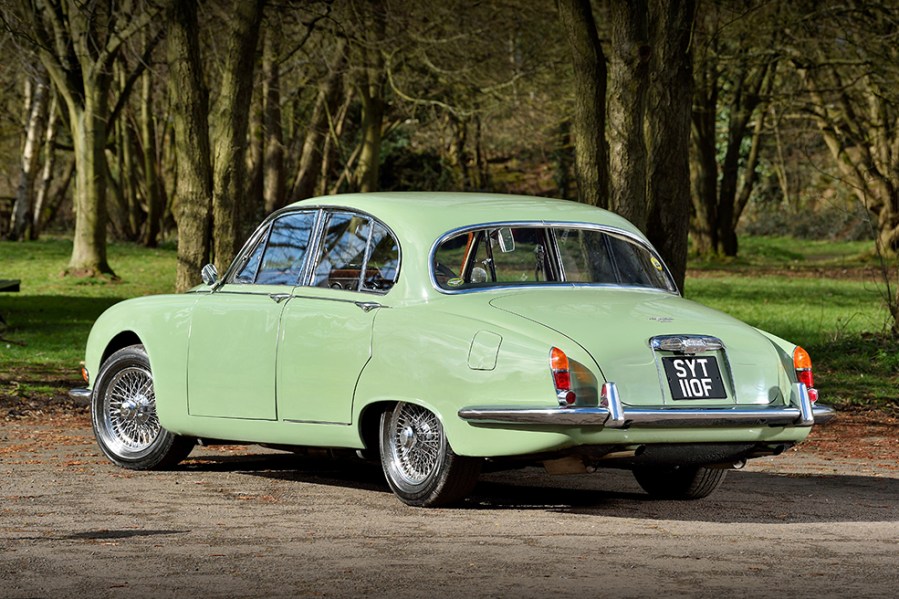
Jaguar S-Type
In some ways, the early 1960s was an embarrassment of riches for Jaguar. In 1961 came its striking MkX saloon, debuting a noteworthy independent rear suspension design. That same year welcomed the arrival of the E-type, sharing some of the MkX’s advents and setting the sports car world alight. Work then began on updating the Mk2 saloon (which had debuted in 1959) to complement its illustrious new stablemates.
The idea to simply bolt MkX technology onto a facelifted Mk2 shell was quickly dismissed, and so Jaguar boss Sir William Lyons penned a new silhouette in the form of the S-Type. While the newcomer did ultimately retain much of the essence of the Mk2, it also took fresh design cues from the larger MkX – some necessitated in order to accommodate new underpinnings. The rear end was where the most obvious styling changes occurred via its wrap-around rump.
Underneath, the S-Type adopted the more sophisticated independent rear suspension arrangement pioneered by its bigger sibling, the MkX. In fact, many felt the S-Type offered a similar prospect to its larger relation in a smaller overall package.
The Jaguar S-Type launched on September 30, 1963, available with 3.4- and 3.8-litre XK engines initially mated to either a Moss manual or three-speed Borg Warner automatic transmission. The first full year of production saw strong sales, though there were serious concerns that the new model was pinching market share from the MkX.
In the first half of 1966, Jaguar found itself in bed with BMC, while towards the end of that year came an evolution of the S-Type badged as the 420 saloon and featuring MkX-like flat frontal styling. To tie in with the latest nomenclature, the 420 was joined by a renamed MkX – the 420G – and for a time they all existed in unison. This left the S-Type as a mid-model of a four-car range, comprising the Mk2, S-Type, 420 and MkX/420G. However, when the XJ6 arrived in 1968, rationalisation was called for and Jaguar culled all existing saloons apart from the 420G. S-Type production ended, after a total of 24,933 had rolled off the line.
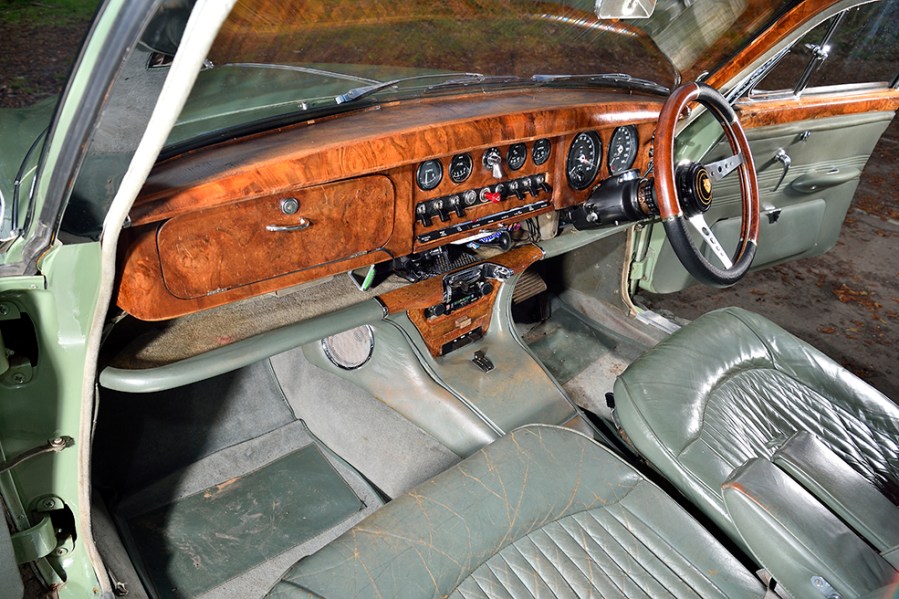
The S-Type was born during a period of insatiable interest in British saloon cars. Jaguar itself had a hand in myriad models, and to the untrained eye the range was more than a little confusing. As a result, many welcomed the arrival of the XJ6 Series 1 which neatly simplified things, but in retrospect the S-Type has grown its fan own base – and not just because it tends to offer better value than an equivalent Mk2. At launch, the S-Type was praised for its ride above all else, well known for making effortless progress in utter comfort. Easy to drive in all environments, its mix of excellent ride quality and great performance was tough to beat, and that remains a valid fact to this day.
Those in the market for an S-Type in 2023 should consider a few salient points. Rot should always be a concern with a car of this era, and on any S-Type you should check the floor and ‘chassis’ members, A-pillars, bulkhead, front crossmember and front panel, trailing arms and rear subframe mounting points. The wings, arches, door bottoms and spare wheel well are also top rot spots.
When it comes to engines, listen for bottom-end noises, including from the timing chain, and watch for oil leaking from the crankshaft. While on the subject of leaks, the rear suspension should be free from deposits, and do check all of the rubber bushes while you’re underneath. On cars fitted with the aforementioned Borg Warner 35 automatic gearbox, beware slow gear changes; for cars equipped with a manual gearbox, check synchros and make sure the overdrive function works.
Revisiting values over recent years is interesting. Between 2014 and 2018, S-Type asking prices were sat at between £18,000 and £30,000, ranging from a roadworthy example in good condition at the bottom end of that scale to a minter at the top. Just a couple of years later, values had risen to between £16,000 and £30,000 for cars in the very same condition, while on today’s market a budget of £20,000 generally secures a good car that’s ready to enjoy.
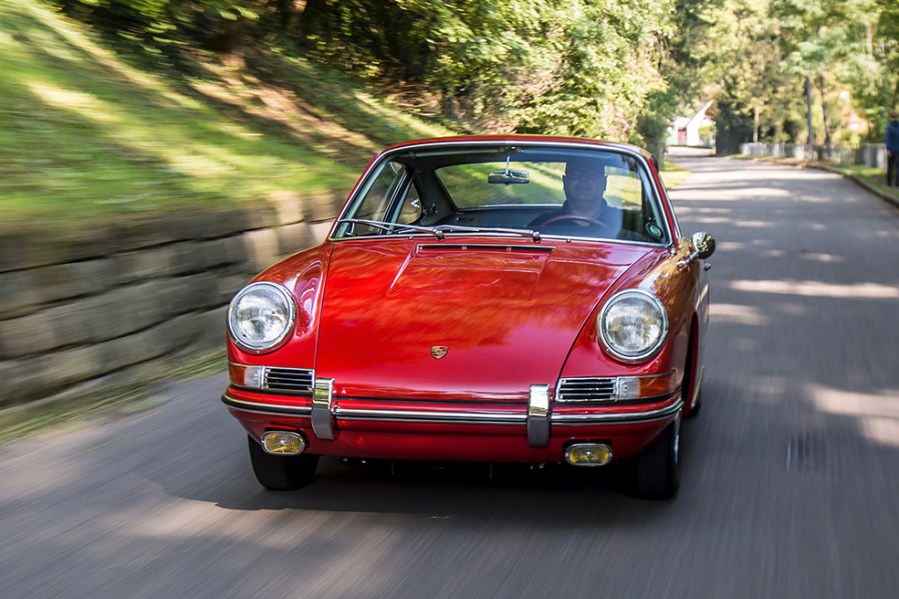
Porsche 911
Thanks to its continuous development, few cars epitomise the concept of automotive evolution over revolution better than the Porsche 911, which made its debut at the 1963 Frankfurt Motor Show as successor to the 356. The 901, as it was initially known before Peugeot interjected and forced a name change, was a sleek 2+2 sports car powered by a rear-mounted, air-cooled, flat-six boxer engine. The 911, as it would become known, offers a recipe that has changed very little since, helping it to become one of the world’s most enduring automotive icons.
Those in the market for a more sedate way of life could soon opt for the four-cylinder Porsche 912, and many did – it outsold its six-cylinder relation. In 1966 came the 911 S, with 160bhp and Fuchs alloys wheels, which soon became the model to covet. Further variants, including the Targa, 911 T, and the later E and S variants, followed. In 1969 displacement was increased to 2.2 litres, and in 1971 to 2.4 litres. The 911 Carrera RS 2.7 of 1972, with its 210bhp engine, feather weight (less than 1000kg) and characteristic ‘ducktail’ spoiler remains a thrilling prospect. A decade after its debut, the 911 was gifted its first thorough makeover, with the G series arriving in 1973; but collectors value the purity of the original cars.
When buying a 911, condition and originality is of utmost importance. There was very little rust protection on early cars, so many will have seen remedial works over the years, and you should ensure this has been done properly. Engine rebuilds aren’t cheap, so make sure there’s no smoke and that performance is as anticipated. It’s best to use a specialist for all things 911; there are plenty of respected firms out there to assist with maintenance, or full professional restorations if that’s the order of the day.
It’s no secret that Porsche 911 values have skyrocketed. Looking back five years, cars in average condition were selling for between £50,000 and £250,000, with restored examples in show condition trading hands for anywhere between £100,000 and £500,000. Today, it’s much the same story with provenance and condition playing a major role, though the ceiling has risen to £750,000-plus.
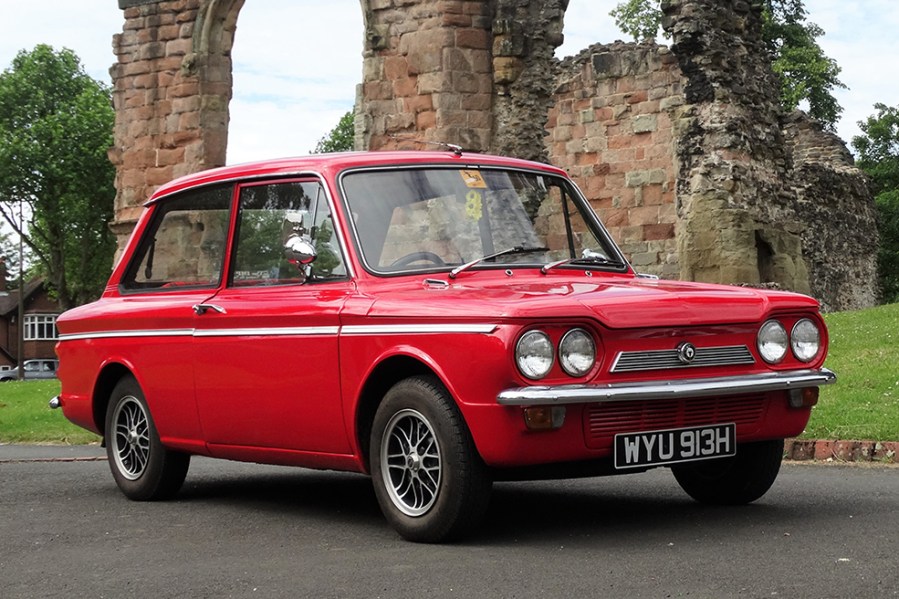
Hillman Imp
When the Suez Crisis amplified a desire for small, economical cars in mid-1950s Britain, Rootes Group set out a clear agenda. Its engineering team was tasked with creating a compact saloon to complement its existing medium and large offerings, and arrived at a design that would become known as the ‘Slug’ – which did not go down well with the suits at Rootes. The board forced a rethink and eventually the Imp as we know it was born.
The Hillman Imp’s concept broke with convention, as unlike most rivals of the period it was rear-engined. The new all-aluminium, Coventry Climax-derived powerplant was mated to an all-synchromesh four-speed gearbox, and mechanically speaking it was advanced for its time. However, while the Imp was still in its gestation period, BMC launched the Mini – and as the Issigonis creation grew in popularity, conversely the Imp struggled. Its development programme had begun in 1955, but by the early 1960s rear-engined family cars like the Imp, Simca 1000 and Renault 8 were falling out of fashion. That said, the Imp’s excellent handling earned it enthusiastic praise in the motoring press.
The range would expand via badge engineering to offer Singer and Sunbeam versions, and there would be coupe, estate and van derivatives in due course. Imp production ceased in 1976, by which time Rootes was operating as Chrysler UK.
Rust is the biggest concern for today’s Imp buyers. Check the sills as they’re structural, and in the wheelarches; the rears are especially prone to rot. The underside of the floorpan is an area to also inspect thoroughly, as are the bottoms of the doors. With regular fluid level checks, the aluminium engine shouldn’t corrode, but any blue exhaust smoke is a worry. The all-synchro gearbox shouldn’t feel notchy or laboured during changes.
The Imp enjoys a dedicated following with strong support at club level. It offers a rewarding driving experience while its simplistic nature makes it a pleasure to work on, especially for those learning the ropes of classic car maintenance. Values for good cars are increasing, with current prices starting at around £4000-£5000 for decent survivors.

Rover P6
Rover was known for its large, luxury saloons prior to the start of the 1960s, but market trends were shifting. Car buyers began to crave smaller vehicles, and a new svelte 2.0-litre class of executive sports saloons beginning to emerge. In what proved to be a massive sea change from what had come before, Rover decided to respond.
Pretty early into the project, use of a gas turbine power unit and hydropneumatic suspension was ruled out, but a somewhat unusual ‘chassis’ concept (similar to that of the Citroën DS) remained. The body used a base frame, an inner monocoque onto which panels were bolted. It was a cunning plan to avoid terminal rot, and allowed for the body to be easily changed should the styling need a refresh. Allied to this came a cutting-edge suspension system, and an all-new 1973cc overhead-cam engine, fitted with a single carburettor in early examples.
Launched within days of the Triumph 2000 in October 1963, the Rover P6 caused quite a stir, revolutionising Rover’s image in the process. A twin-carb 2000TC version arrived in 1966, and two years later came the 3500 – its ex-GM 3.5-litre all-alloy V8 coming to define the P6 for many. The V8 was first made available with a three-speed automatic gearbox, but in 1971 came the 3500S with its four-speed manual. The four-cylinder engines soon increased in capacity to 2.2 litres with the arrival of the 2200 and 2200TC models prior to production ending in 1977.
With the P6’s panels ‘hung’ on that steel skeleton, buyers should pay utmost attention to what lies beneath, for everything else is relatively easy to replace. A simple way to check for rot is to open the rear doors to assess the D-posts; if they show signs of trouble, chances are the rest of the chassis is in the same condition, causing structural concerns. A rusty bulkhead should also raise the alarm. Engines are quite robust provided they have been regularly maintained. Today, prices rise from £5000 for a very good example, though superb survivors are into five figures.
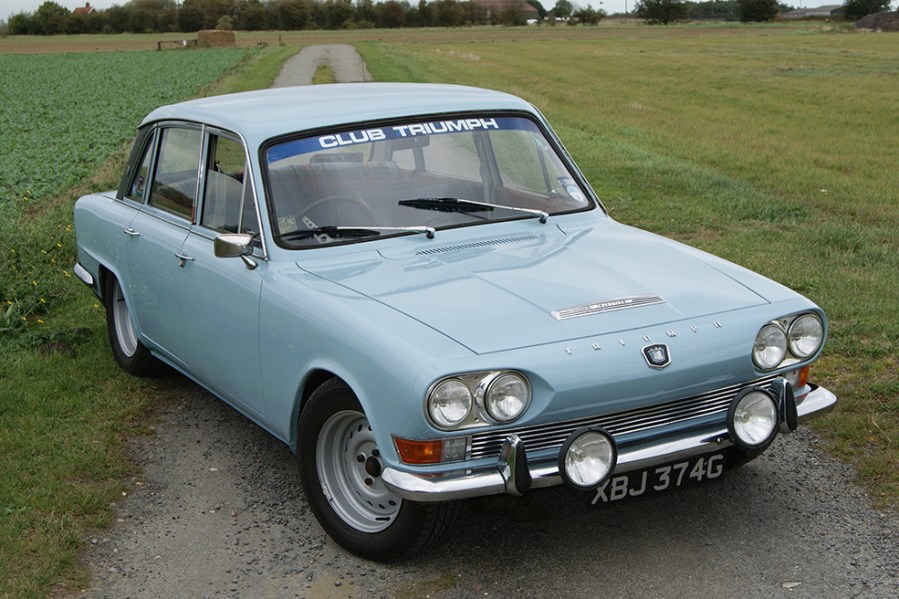
Triumph 2000
As with the P6 and Rover, the Triumph 2000 represented something of a departure for its maker. By the middle of the 1950s, Standard-Triumph was facing an ageing product line-up; the arrival of the Herald at the end of the decade did much improve its image, but it needed a new saloon that could do the same job with upper mid-range company car buyers. Work on a replacement for its existing Vanguard saloon had already begun in 1957, but the project fell into disarray when, late into development, Triumph learned that its design closely resembled that of the forthcoming Consul Classic from Ford.
A hasty rethink ensued, but it was really an injection of funds following the takeover of Standard-Triumph International by Leyland that largely saved the day. Now with fresh impetus, a new design was created by technical director Harry Webster; it boasted the already well-proven straight-six motor but this time allied to a modern monocoque bodyshell. However, perhaps the real coup was the styling by Giovanni Michelotti, known for his achingly beautiful designs for the likes of Ferrari, Lancia and Maserati.
Although the Triumph 2000 was launched in late 1963, it was 1964 before the order books were opened, and it was well received by both press and public. In 1965 came an estate version, coachbuilt by Carbodies in Coventry, which served to bolster sales.
In 1968, the merger between Leyland and BMC to create British Leyland made the Rover P6 and Triumph 2000 uneasy bedfellows, although the latter stood out thanks to its six-cylinder advantage. In response, Triumph pushed its model’s engine capacity to 2498cc, and introduced fuel injection to create the 2.5 PI. A year later, a restyled Mk2 version appeared, followed by a facelift in 1974. Production of the 2000/2500 ended in May 1977.
Thanks to the 2000/2500’s double-skinned bodyshell and three-part sills, major restoration is expensive and time consuming. It therefore might pay to find a car that’s either completely free from rot, or one where at least some of the hard work has already been undertaken in the past. These days as little as £4000-£5000 gets you a roadworthy Mk2 2000, though you’ll pay far more for one in excellent condition.






